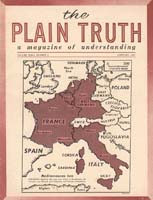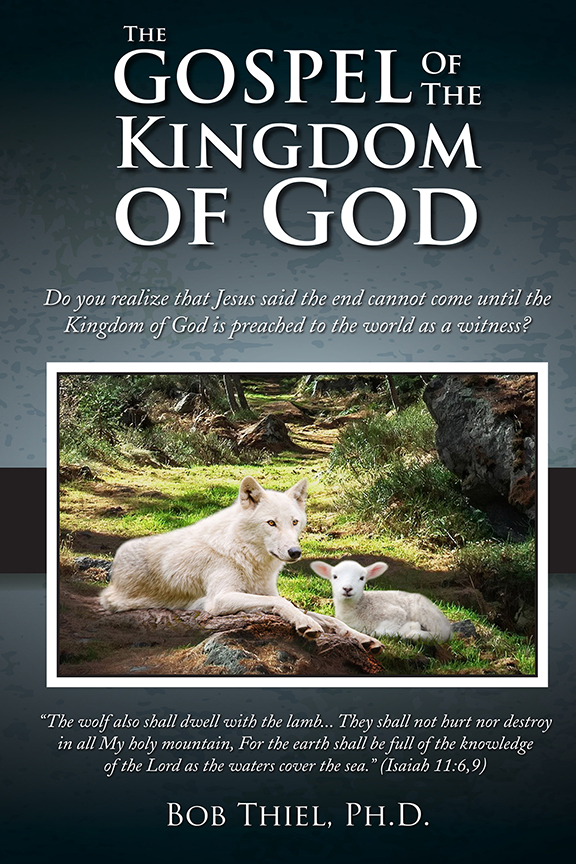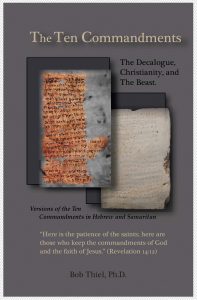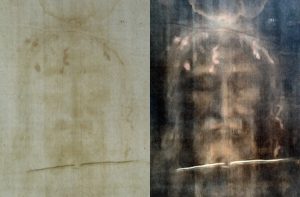
Face in Shroud: Actual and Enhanced (Dianelos Georgoudis)
COGwriter
Are you familiar with the Shroud of Turin? Could it possibly be real?
Before looking at some Protestant writings in favor of its authenticity, consider the following:
The earliest historical records of the Shroud of Turin place it in Lirey, France during the 1350s. A French knight named Geoffroi de Charny allegedly presented it to the dean of the church in Lirey as Jesus’ authentic burial shroud. There’s no record of how de Charny got his hands on the shroud, nor where it was during the 1300 intervening years since Christ’s burial outside Jerusalem. …
Around 1389, Pierre d’Arcis—the bishop of Troyes, France—sent a report to Pope Clement VII claiming an artist had confessed to forging the shroud. Furthermore, d’Arcis claimed the dean of the Lirey church knew it was a fake and had used it to raise money anyway. In response, the pope declared the shroud wasn’t the true burial cloth of Christ. …
Despite the fact that Pope Clement VII declared the shroud a fake over 600 years ago, there has been no end to the debate about the shroud’s authenticity. … In 2018, researchers used forensic techniques to argue the blood stains on the shroud couldn’t have come from Christ. 04/09/20 https://www.history.com/news/shroud-turin-facts
“Christian Headlines’ earlier reported the following about the Shroud of Turin:
Italian researchers and experts have revealed that they have new and fascinating answers to how Jesus looked as a human man.
The researchers based their study off the Shroud of Turin, which, as CBN News reports, is a 14-foot linen cloth that is believed to be what Jesus’ body was wrapped in before He was put in the tomb. It is also believed to be imprinted with an image of Jesus’ face. …
For the Christian tradition the image that is seen on the Shroud is that of Jesus crucified dead. And now science is of this opinion too,” said Giulio Fanti, a professor of mechanical and thermal measurements at the University of Padua in Italy. “We have studied for years using the most sophisticated 3D technologies the image left by the body on the sheet. And the statue is the final result.” …
Based on this replica, Jesus is thought to have been taller than the average man from the first century.
“According to our studies, Jesus was a man of extraordinary beauty. Long-limbed, but very robust, he was nearly 5 ft. 11 in. tall, whereas the average height at the time was around 5 ft. 5 in. And he had a regal and majestic expression,” said Fanti.
The University of Padua and Padua Hospital collaborated to create the life-sized replica of Jesus, 04/02/18 https://www.christianheadlines.com/blog/researchers-create-life-sized-replica-of-jesus-based-on-shroud-of-turin.html
This is NOT real Christian news as the Shroud is NOT possibly the burial cloth of Jesus.
In February 2018, World Net Daily (WND) ran the following headline about the Shroud of Turin:
9 reasons Shroud of Turin is the real deal
I will not bother to list their reasons as to why they claim that the Shroud of Turin is “the real deal,” because it cannot be.
While WND sometimes has useful information, pushing this shroud nonsense is absurd.
There is no way that the Shroud of Turin represents Jesus.
Even the Church of Rome will not say it is the real deal (but it teaches that it is fine to idolize/venerate it).
In the past couple of years, I have seen comments from some Protestant leaders who seem to believe Jesus used this shroud. WND is also a Protestant source, and really should not be promoting icons like this.
Here are a few comments on the Shroud of Turin from the Answers.com article titled Is the Shroud of Turin true or fraud?:
There is no record of the shroud during the first centuries of the Christian era, it is first mentioned in the 14th century, having been found in the Diocese of Troyes…
The Gospel writers say that the body of Jesus, after being taken from the stake by Joseph of Arimathea, was wrapped in clean fine linen. (Matthew 27:57-61; Mark 15:42-47; Luke 23:50-56) The apostle John adds: Nicodemus also came bringing a roll of myrrh and aloes, about a hundred pounds of it. So they took the body of Jesus and bound it up with bandages with the spices, just the way the Jews have the custom of preparing for burial. John 19:39-42…writers of the third and fourth centuries, many of whom wrote about a host of miracles in connection with numerous relics, did not mention the existence of a shroud containing the image of Jesus. What happened to it at this time, if it did exist, is unknown.
Let’s quote John 19:39-42 in its entirety:
39 And Nicodemus, who at first came to Jesus by night, also came, bringing a mixture of myrrh and aloes, about a hundred pounds. 40 Then they took the body of Jesus, and bound it in strips of linen with the spices, as the custom of the Jews is to bury. 41 Now in the place where He was crucified there was a garden, and in the garden a new tomb in which no one had yet been laid. 42 So there they laid Jesus, because of the Jews’ Preparation Day, for the tomb was nearby. (John 19:39-42)
Basically, strips of linen were placed on Jesus’ body somewhat like a mummy (this is also basically what happened to Lazarus, see John 11:43-44). If the Shroud of Turin was saturated with myrrh and aloes, it would by now be fairly stiff and would tend to look quite different than it now does.
Notice furthermore that Jesus’ burial cloths, though mentioned in scripture, are basically only mentioned as being folded after the resurrection (and the description of multiple cloths also does not necessarily seem to quite match the Shroud of Turin):
6 Then Simon Peter came, following him, and went into the tomb; and he saw the linen cloths lying there, 7 and the handkerchief that had been around His head, not lying with the linen cloths, but folded together in a place by itself. 8 Then the other disciple, who came to the tomb first, went in also; and he saw and believed. 9 For as yet they did not know the Scripture, that He must rise again from the dead. 10 Then the disciples went away again to their own homes. (John 20:6-10).
By the time the Apostle John wrote this, if there had been any real special powers associated with the shroud, it would have seemed that he would have mentioned them, but he did not.
Carbon 14 dating points to the shroud as a forgery from the Middle Ages:
The Carbon-14 Bombshell
In 1988, the Vatican authorized carbon-14 dating of the shroud. Small samples from a corner of its fabric were sent to labs at the University of Oxford’s Radiocarbon Accelerator Unit (RAU), the University of Arizona, and the Swiss Federal Institute of Technology. All three found that the shroud material dated to the years between 1260 and 1390, more than a millennium after the life and death of the historical Jesus.
The labs assessed the reliability of their estimate at 95 percent. To make the case even more convincing, the dates closely coincided with the first documented appearance of the Shroud of Turin in 1353. 04/17/15 https://www.nationalgeographic.com/news/2015/04/150417-shroud-turin-relics-jesus-catholic-church-religion-science/
Notice also the following:
Curiously enough, it was a Roman Catholic bishop who first branded the shroud a fraud. When, in the year 1356, the fourteen-by-three-and-a-half-foot piece of linen was exhibited at the obscure church of Lirey in central France — the first known historical record of its existence — it quickly became the subject of a lengthy memorandum to the Pope from Henry of Arcis, bishop of Troyes. Bishop Henry alleged that the Lirey canons had “falsely and deceitfully, being consumed with the passion of avarice and not from any motive of devotion but only of gain, procured for their church a certain cloth cunningly painted, upon which by clever sleight of hand was depicted the twofold image of one man, that is to say the back and the front, they falsely declaring and pretending that this was the actual shroud in which our Savior Jesus Christ was enfolded in the tomb.” …
In Search of a Past
“I am convinced that this is the shroud that covered Jesus Christ after His crucifixion.” So declared Dr. Max Frei of the University of Zurich after painstakingly testing for pollen grains in the linen of the shroud and analyzing them.
“My analysis of pollen grains has been confirmed under the electron microscope beyond any reasonable doubt…. I isolated from the shroud more than a dozen pollen grains from plants growing in Jerusalem and surrounding deserts. They grow only in the Near East,” he said.
“The pollen most found on the shroud is identical to the most common pollen in the sediment of Lake Tiberias, in Israel” (National Enquirer, Nov. 29, 1977).
But even if we accept that the pollen proves the shroud once resided in Palestine, it would not necessarily connect it with Christ, for Dr. Frei also found in its fibers pollen from the area of southeastern Turkey! This finding would, perhaps, support Ian Wilson’s theory that the shroud itself is none other than the famous Mandylion (meaning “napkin” or “handkerchief’ in Arabic) which had been brought to Constantinople from Edessa in eastern Turkey. From there he postulates the Knights Templars took the shroud to the Holy Land before bringing it to France.
The Byzantine Connection
Fifty years before the shroud enters history in the possession of Geoffrey deCharnay and the Lirey church, there was another Geoffrey deCharnay. This other Geoffrey is not provably related, but shroudists suspect that he was. This man was a famous knight of the Templar organization, which King Philip the Fair of France charged with secret “idol” worship of a disembodied head — the image on the shroud, says Wilson and Geoffrey was martyred, all the while denying there was any idol.
The Templars had sacked Constantinople (Byzantium) in 1204, which, as capital of the Byzantine Empire and center of its religion, had become glutted with relics and icons innumerable. Among the relics, according to extant records, was something called a burial cloth of Christ, which apparently bore a full length image, and also the famous Edessa image, the Mandylion, which had been taken by force from the Moslem rulers of its city in A.D. 944. These both disappeared in the looting — possibly taken to the Templars’ Palestine headquarters.
Ian Wilson speculates that both cloths were one and the same. He explains the double listing as possibly referring to copies of the original. A flourishing industry existed in Byzantium of making cloth and other images of “Christ.” Many of these were, like the Mandylion itself, regarded as miraculously produced.
The problem for Wilson’s theory is that the Edessa image is specifically described as a face only, appearing on a towel, a veronica napkin, while on the Turin shroud is undeniably a double full length figure. Wilson suggests the reason was that the shroud had always been kept folded in such a way that only the face was showing.
In any event, the image on the shroud has a long, sad face and long hair. A writer for the London Tablet was moved to observe: “The first thought likely to occur is: But how very strongly the figure resembles the Christ of any number of old masters [painters of the fifth century on]”‘ (quoted from Wilcox, p. 26).
What the Earlier Paintings Looked Like
There is more to that statement than meets the eye.
The oldest pictures of Christ are paintings on the walls of the catacombs of Rome. Most date from the second and third centuries. It was against the teachings of the church to have such pictures (see box: The Early Church and Images). Nevertheless, those who sketched them only about 100 years after the apostles — were undoubtedly acquainted with individuals who were familiar with the general appearance of Christ that came by word of mouth from His own generation.
“… There is a painting of the Resurrection of Lazarus in which Christ is shown — youthful and beardless, with short hair and large eyes…. Although it is now only barely recognizable, this picture is of great interest since it is the oldest representation of Jesus that is preserved anywhere” (Roderic Dunkerley, Beyond the Gospels, p. 57).
In all of these early portrayals, “He is almost invariably boyish…. His hair is short” (Frederic William Farrar, The Life of Christ as Represented in Art, 1894, p. 43). Short hair was the predominant style among men in the Hellenized areas of the eastern Mediterranean (including Palestine) in Christ’s time. …
How Was Christ’s Body Really Wrapped?
The shroud theory demands that Christ’s body was covered differently than was the custom in Jewish burial. The usual fashion was for the body to be wrapped cocoon-wise in strips of linen cloth which were bound at hands and feet. All representations of Christ’s burial in the first four centuries assumed this Egyptian-like style. “The [Jewish] corpse was wrapped in a shroud, and bandages soaked with resin were wound around the hands and feet: a cloth, the sudarium, was placed over the face (John 11:44). Finally the tomb was shut” (Bo Reicke, The New Testament Era, p. 187).
The account of the raising of Lazarus illustrates the method. “The dead man came out, his hands and feet bound with bandages, and his face wrapped with a cloth.” It would appear that he was so enclosed and tied as to be scarcely able to walk until “Jesus said to them, `Unbind him, and let him go”‘ (John 11:44). Shroud of Turin theorists postulate that Joseph of Arimathea, not having time to bury Christ’s body properly, simply covered it, leaving the body lying amidst the rolls of cloth he had brought for the usual wrapping, perhaps intending to return and use them after the Sabbath. They suppose this may have been what Peter saw when he came into the tomb after the resurrection and saw “linen cloths lying, and the napkin, which had been on his head… rolled up in a place by itself (John 20:6-7).
But Matthew tells us that “Joseph took the body, and wrapped it in a clean linen shroud” (Matt. 27:59). This shroud was obviously not merely a long flat cloth like the Turin shroud, laid out under the body, then folded over it from the head.
The Gospel of John plainly tells us that Joseph and his company actually “bound it [the body — not merely covered it] in linen cloths [plural] with the spices, as is the burial custom of the Jews” (John 19:40). This was done even before they carried the body to the tomb (verse 42). (Briggs LC. ICON SUPREME? THE SHROUD OF TURIN. Plain Truth, December 1978)
As far as the claim that the face on the Shroud agrees with tradition about Jesus’ appearance goes, consider the following:
- The earliest known depictions of Jesus had short hair and did not look like the Shroud
- Jesus was never reported as being tall in the Gospels or by the Apostle Paul
- The ‘traditional’ image of Jesus is more of a compromise with how the pagan god Zeus looked
Notice the following:
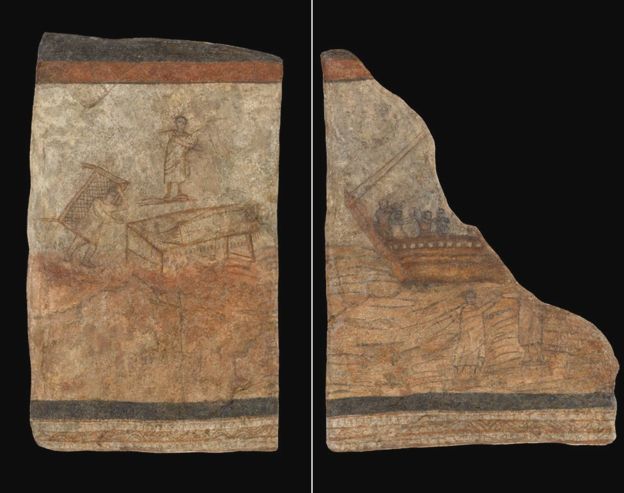
The earliest surviving paintings claimed to be of Jesus, from a church at the ruined city of Dura-Europos on the Euphrates (dating from first half of the 3rd Century AD)
Jesus is not shown to have long hair or a long beard.
A while back, the BBC addressed the fact that the commonly seen pictures claiming to be of Jesus are false, but instead are of a Byzantine version of Zeus:
Everyone knows what Jesus looks like. He is the most painted figure in all of Western art, recognised everywhere as having long hair and a beard, a long robe with long sleeves (often white) and a mantle (often blue).
Jesus is so familiar that he can be recognised on pancakes or pieces of toast.
But did he really look like this?
Probably not.
In fact this familiar image of Jesus actually comes from the Byzantine era, from the 4th Century onwards, and Byzantine representations of Jesus were symbolic – they were all about meaning, not historical accuracy.
They were based on the image of an enthroned emperor, as we see in the altar mosaic of the Santa Pudenziana church in Rome. …
Jesus is dressed in a gold toga. He is the heavenly ruler of all the world, familiar from the famous statue of long-haired and bearded Olympian Zeus on a throne . . . Byzantine artists, looking to show Christ’s heavenly rule as cosmic King, invented him as a younger version of Zeus. What has happened over time is that this visualisation of heavenly Christ – today sometimes remade along hippie lines – has become our standard model of the early Jesus. December 24, 2015 http://www.bbc.com/news/magazine-35120965
From the above, we can also conclude that when we have reports of people who claim to have seen Jesus in various ways, those who claimed He had long hair, etc., clearly were not seeing Jesus.
The same can be said of the Shroud of Turin–that could not possibly be Jesus.
It is a version of the pagan deity Zeus that many people are bowing down before or otherwise venerating (perhaps it should also be added here that many of the portrayals of Jesus’ mother Mary, came from worship of goddesses, like Diana, who the Greeks called Artemis).
While the BBC article used the expression “probably not” related to whether Jesus had long hair, the biblical answer is DEFINITELY NOT.
Notice what the Bible says:
14 Does not even nature itself teach you that if a man has long hair, it is a dishonor to him? (1 Corinthians 11:14)
Jesus did not have long hair. If He did, the Apostle Paul would not have written the above. For additional proof, consider the following:
1 Imitate me, just as I also imitate Christ. (1 Corinthians 11:1)
Paul would not be imitating Christ by denouncing His hair length. Consider also that God inspired the Apostle John to write:
6 He who says he abides in Him ought himself also to walk just as He walked. (1 John 2:6)
If Jesus had long hair, God would not have inspired John to say to walk as Jesus walked, while also inspiring Paul to write that it is a shame for a man to have long hair.
Now let’s see some more from the BBC article:
When early Christians were not showing Christ as heavenly ruler, they showed Jesus as an actual man like any other: beardless and short-haired. … in the 1st Century Graeco-Roman world, being clean-shaven and short-haired was considered absolutely essential. http://www.bbc.com/news/magazine-35120965
No early Christian ever showed Jesus as a long haired person. Having short hair was normal. The earliest found depictions of Jesus do NOT show Jesus to have had long hair. While no one knew, even then, what Jesus actually looked like, it took another century (and likely the influence of the idolatrous Emperor Constantine) before the longed-hair portrayals began to appear en mass.
Furthermore, if Jesus had distinctively long hair, He would have been highly recognizable. But the Bible shows that He was not. Once, while He was speaking to the Jews during the day, they wanted to stone Him, but He escaped right after talking to them (John 10:31-39), which indicates He was not excessively tall (like the Shroud of Turin suggests) or had distinguishing features like long hair.
Furthermore, the Jewish leaders felt the need to pay Judas (Mark 14:10) to point out Jesus with a kiss so they could arrest Him (Mark 14:43-46), which they would not have needed to do if He was distinguished with features like long hair.
Getting back to the BBC article, notice why else Jesus would not have had long hair:
If he had had even slightly long hair, we would expect some reaction. Jewish men who had unkempt beards and were slightly long-haired were immediately identifiable as men who had taken a Nazirite vow. This meant they would dedicate themselves to God for a period of time, not drink wine or cut their hair – and at the end of this period they would shave their heads in a special ceremony in the temple in Jerusalem (as described in Acts chapter 21, verse 24).
But Jesus did not keep a Nazirite vow, because he is often found drinking wine – his critics accuse him of drinking far, far too much of it (Matthew chapter 11, verse 19). If he had had long hair, and looked like a Nazirite, we would expect some comment on the discrepancy between how he appeared and what he was doing – the problem would be that he was drinking wine at all. http://www.bbc.com/news/magazine-35120965
And that is correct. Notice that the Bible shows Jesus did drink wine, but that the Nazirites could not:
19 The Son of Man came eating and drinking, and they say, ‘Look, a glutton and a winebibber, a friend of tax collectors and sinners!’ But wisdom is justified by her children. (Matthew 11:19)
1 Then the Lord spoke to Moses, saying, 2 “Speak to the children of Israel, and say to them: ‘When either a man or woman consecrates an offering to take the vow of a Nazirite, to separate himself to the Lord, 3 he shall separate himself from wine and similar drink; he shall drink neither vinegar made from wine nor vinegar made from similar drink; neither shall he drink any grape juice, nor eat fresh grapes or raisins. 4 All the days of his separation he shall eat nothing that is produced by the grapevine, from seed to skin. (Numbers 6:1-4)
While some claim that Jesus never made nor drank wine, but only grape juice, consuming anything from grapes was prohibited for Nazirites. Since Jesus did not sin, He certainly was not under a Nazirite vow walking around with long hair while at the same time drinking anything produced from grapes.
Sadly, many prefer to accept the Byzantine portrayal of Jesus as Zeus.
Zeus was the head of the pagan deities that Romans and Greeks (though the Romans called Zeus ‘Jupiter’) worshiped. Christians certainly were not to continue in pagan worship practices by renaming Zeus as Jesus. Nor were they to rename other pagan deities as something else nor incorporate pagan holidays into their form of worship:
20 Rather, that the things which the Gentiles sacrifice they sacrifice to demons and not to God, and I do not want you to have fellowship with demons. 21 You cannot drink the cup of the Lord and the cup of demons; you cannot partake of the Lord’s table and of the table of demons. (1 Corinthians 10:20-21)
People are not honoring Jesus by venerating long haired portrayals of Him that came from paganism.
Furthermore, even if the actual burial cloth of Jesus was the Shroud of Turin or some other similar relic, it should not be venerated by Christians.
History records that the early Christians opposed venerating relics. Many do not seem to realize how negatively early Christians viewed such items.
The Continuing Church of God does not consider that the Shroud of Turin is holy nor is possibly the burial cloth of Jesus.
Among other reasons, it is not supported by the historical record nor scripture. The image on the Shroud of Turin shows a long-haired male. Yet, Jesus did not have long hair.
Notice that even Catholic translations of the Bible support that:
14 Does not nature itself teach you that if a man has long hair, it is a disgrace to him, 15 but when a woman has long hair, it is her glory? (1 Corinthians 11:14-15a, New Jerusalem Bible)
While hair does grow after death, it does not grow quickly enough for the length that is on the Shroud of Turin. Jesus said He would be in the grave three days and three nights (Matthew 12:40), and that would not be enough time for long hair to appear.
Here is a more complete picture of the 3d image:
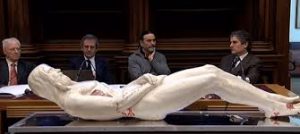
From worldtruth.tv
That image is too big too have been Jesus of the Bible.
Furthermore, notice the following:
Length Measurements on the Shroud of Turin …
Measurements taken by Bruno Barberis and Gian Maria Zaccone give (frontal image at the bottom left, dorsal image at the top) 441.5 cm for the right height, and 442.5 cm for the left height. The bottom width is 113.0 cm and the top width is 113.7 cm. http://www.iro.umontreal.ca/~latendre/shroud/shroudCal.html
This means that the Shroud of Turin is 174 inches, 14.5 feet, long. The height of the man in the shroud would need to be about 6 ft. tall. That could not be Jesus.
Why?
Jesus did not stick out in a crowd (cf. Luke 4:28-29), and even needed someone to identify Him (Matthew 26:48). Men were much shorter then than now and a six foot man would be noticed. If the shroud was that of Jesus, Jesus would have had to be tall to blend into the crowds at that time. There is no reason to believe Jesus was tall or had any special appearance–the Bible indicates the opposite (cf. Isaiah 53:2).
Most do not know a lot about the Bible and know even less about early church history–and what many think they know is clouded by misinformation and misconceptions.
And the Shroud of Turin does not provide helpful information into original Christianity, it only seems to be for those who prefer icons and improper traditions of men over what the Bible teaches.
People claiming to be Christians should not promote it as a relic of Jesus!
The Continuing Church of God also has the following video on our Bible News Prophecy YouTube channel:
The Shroud of Turin has been a mystery to many for a long time. In April of 2018, a possibly full-sized 3-dimensional replica of the 5′ 11″ man in that Shroud was shown to the public. Could the Shroud of Turin have been the actual burial cloth of Jesus? In this video, Dr. Thiel goes over 12 reasons to consider about the possible authenticity of the Shroud of Turin. These include the belief that blood residue as a result of Jesus being tortured is on it, its age, claimed blood type, presence of pollens native to Israel/Palestine and Turkey, the fact that the Shroud is not a simple stain or painting, location of nail marks, 100 whip lacerations, the appearance of a spear wound, the use of myrrh and aloes in Jewish burial customs (John 19:39-40), the hair shown in facial/head image and practices in that day (cf. 1 Corinthians 11:14), and the size of the man in the Shroud (cf. Luke 4:28-29; Matthew 26:48). Do the reasons, in the light of scripture, prove or disprove that the Shroud of Turin is real or a fake? What do early drawings/painting suggest that Jesus looked like? Should Christians venerate it?
Here is a link to our video: Could the Shroud of Turin Be Real? 12 Reasons to Consider.
It is NOT possible that Shroud of Turin was the burial cloth of Jesus.
There is REAL proof Jesus is the Messiah (see the free online book Proof Jesus is the Messiah). Do not, however, base your faith on fakes.
Those interested in early Christianity may wish to study the following documented items and presentations to learn more:
Clear Proof that the Shroud of Turin is Fake: Debunking the ‘reasons’ that the Shroud of Turin is real There is NO proof that the Shroud of Turin has Jesus’ image and those who are willing to believe the Bible can prove it is fake. Here is a link to a related video: Could the Shroud of Turin Be Real? 12 Reasons to Consider.
Proof Jesus is the Messiah This free book has over 200 Hebrew prophecies were fulfilled by Jesus. Plus, His arrival was consistent with specific prophecies and even Jewish interpretations of prophecy. Here are links to seven related sermons: Proof Jesus is the Messiah, Prophecies of Jesus’ birth, timing, and death, Jesus’ prophesied divinity, 200+ OT prophecies Jesus filled; Plus prophecies He made, Why Don’t Jews Accept Jesus?, Daniel 9, Jews, and Jesus, and Facts and Atheists’ Delusions About Jesus. Plus the links to two sermonettes: Luke’s census: Any historical evidence? and Muslims believe Jesus is the Messiah, but … These videos cover nearly all of the book, plus have some information not in the book.
Jesus: The Son of God and Saviour Who was Jesus? Why did He come to earth? What message did He bring? Is there evidence outside the Bible that He existed? Here is a YouTube sermon titled Jesus: Son of God and Saviour.
What Did the Early Church Teach About Idols and Icons? Did the early Church use icons? What was the position of Christians about such things? A related sermon is available: The Second Commandment, Idols, and Icons.
Which Is Faithful: The Roman Catholic Church or the Continuing Church of God? Do you know that both groups shared a lot of the earliest teachings? Do you know which church changed? Do you know which group is most faithful to the teachings of the apostolic church? Which group best represents true Christianity? This documented article answers those questions. [Português: Qual é fiel: A igreja católica romana ou a igreja do deus?]
Continuing History of the Church of God This pdf booklet is a historical overview of the true Church of God and some of its main opponents from Acts 2 to the 21st century. Related sermon links include Continuing History of the Church of God: c. 31 to c. 300 A.D. and Continuing History of the Church of God: 4th-16th Centuries and Continuing History of the Church of God: 17th-20th Centuries. The booklet is available in Spanish: Continuación de la Historia de la Iglesia de Dios, German: Kontinuierliche Geschichte der Kirche Gottes, French: L �Histoire Continue de l �Église de Dieu and Ekegusii Omogano Bw’ekanisa Ya Nyasae Egendererete.
Where is the True Christian Church Today? This free online pdf booklet answers that question and includes 18 proofs, clues, and signs to identify the true vs. false Christian church. Plus 7 proofs, clues, and signs to help identify Laodicean churches. A related sermon is also available: Where is the True Christian Church? Here is a link to the booklet in the Spanish language: ¿Dónde está la verdadera Iglesia cristiana de hoy? Here is a link in the German language: WO IST DIE WAHRE CHRISTLICHE KIRCHE HEUTE?
The History of Early Christianity Are you aware that what most people believe is not what truly happened to the true Christian church? Do you know where the early church was based? Do you know what were the doctrines of the early church? Is your faith really based upon the truth or compromise?
The Churches of Revelation 2 & 3 Do they matter? Most say they must, but act like they do not. This article contains some history about the Church of God (sometimes referred to as the continuation of Primitive Christianity) over the past 2000 years.
What Do Roman Catholic Scholars Actually Teach About Early Church History? Although most believe that the Roman Catholic Church history teaches an unbroken line of succession of bishops beginning with Peter, with stories about most of them, Roman Catholic scholars know the truth of this matter. This eye-opening article is a must-read for any who really wants to know what Roman Catholic history actually admits about the early church.
Nazarene Christianity: Were the Original Christians Nazarenes? Who were the Nazarene Christians? What did they believe? Should 21st century Christians be modern Nazarenes? Is there a group that exists now that traces its history through the Nazarenes and holds the same beliefs today? Here is a link to a related video sermon Nazarene Christians: Were the early Christians “Nazarenes”?
Location of the Early Church: Another Look at Ephesus, Smyrna, and Rome What actually happened to the primitive Church? And did the Bible tell about this in advance?



